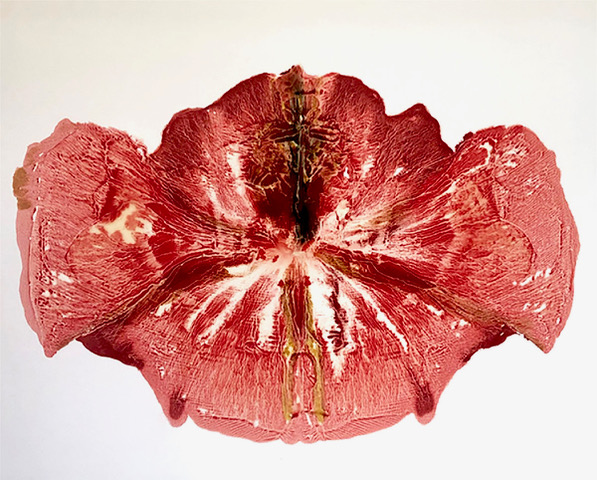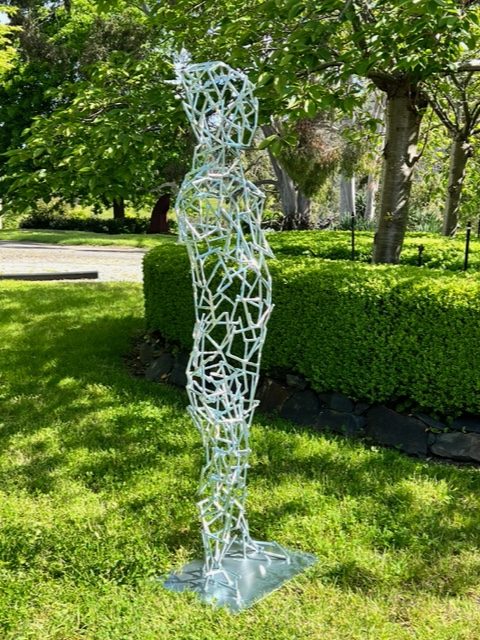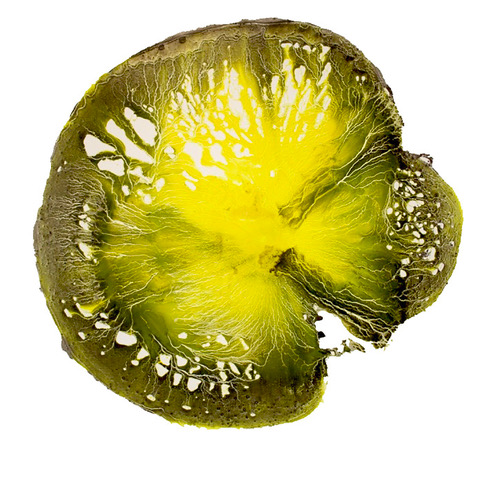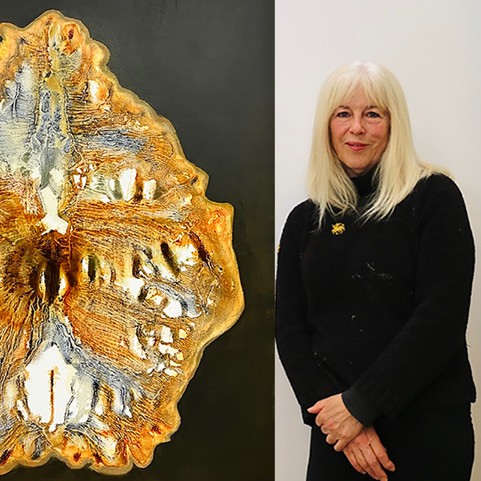Jenny Reddin is an Australian painter and sculptor. She creates large-scale abstract paintings using her own technique of poured paint. In an interview with Fine Art Shippers, the artist spoke about her sources of inspiration, the beauty of the landscape, the fragments and structures of nature, and the feeling of awe in her environment.
Artist Talk: Jenny Reddin on Losing Yourself in Art
In your artist statement, you write about the role of the subconscious and emotions. Could you elaborate on that? What do you seek to explore and express with your art?
Jenny Reddin: I agree with many other artists that the role of art is to inspire emotion. Pleasant, uplifting emotions, but sometimes negativity, because this contrast is life. But I hope my art evokes mostly positive feelings, of awe and wonder. I like to paint large-scale works, so that when you stand in front of them, you do not notice anything out of your peripheral vision, almost sinking into the artwork. I live in one of the most beautiful parts of Victoria – the Yarra Valley, a wine region. Here there are gorgeous rolling hills and a lot of natural forests and wildlife. With my art, I want to convey that feeling of being in an engaging, enveloping, and peaceful space where you can lose yourself.

What is your painting technique? How do you create your works?
There is always an acrylic layer underneath that gives me the texture. Then I mix a very viscous solution of solvent and pigment. I pour it onto the canvas, which I lay out flat. After that, I manipulate the canvas, being careful not to make the colors go muddy. I play with the pigments until they achieve the aesthetic I am looking for. It's a process of trial and error, and I have had a lot of failures. If I am not satisfied with the result, I rip them off the stretcher and start over.
I have been using this technique for 15 years, and over the years, I have learned which mediums give me a little control and which ones slip away. When possible, I use transparent pigments that allow the acrylic layer to show through and give the work the luminosity I want to achieve. Depending on the specific gravity of each pigment, they fall out of the solution at different rates. As a result, in some areas, the pigments are almost washed away to leave thin layers, whilst in others, there are intense areas of pigmented canvas.

Given the painting technique you use, are there any special requirements for the display of your works, for example, in terms of lighting, temperature, humidity, etc.?
It is best to avoid extreme heat as well as temperature fluctuations. Air conditioning can sometimes cause the canvas to sag a bit. Other than that, there are no problems with the medium I use. Once it's applied and dried, it's absolutely permanent.
You are inspired by the organic forms, aren't you?
Yes, as I said, we live in a beautiful location surrounded by nature. I am inspired by moss on a rock, by fragments of leaves and fungus, and often by the skeletons and bones of animals that have died in the bushland.
Your sculptures, on the other hand, are more figurative. What is your approach as a sculptor?
I turned to sculpture only recently, during the covid lockdown. I took the opportunity to teach myself how to weld. Anthony Gormley has been a great inspiration in this regard. I have been playing with metal and exploring its possibilities. I think metal is the most wonderful material to work with. In my flat sheet works, I am interested in creating works that express individuality through gesture, stance, and color. Throughout covid lockdowns, I carved the silhouettes of friends and family in mild steel sheets, which I then painted using a version of my poured paint technique. Another process I am using is welding metal rods to create humanoid figures. These express the essential structure of the body where the spaces between the bar are as important as the bar itself. Either way, I get the sense that I am “drawing” with metal.
As you mentioned, your artwork is large-scale. What limitations does that impose when it comes to shipping your art?
I remember shipping from Melbourne to New York, from where some of the unsold work went to Hong Kong and Japan, and some came back to Melbourne. That was an expensive undertaking. But it was worth it, I certainly would do it again. Aside from the cost, shipping art has never been a problem for me. When you work with professionals who know the ins and outs of art shipping, it's always a good experience. The works are well packaged, well protected, and handled with care.
 Photo courtesy of Jenny Reddin
Photo courtesy of Jenny Reddin